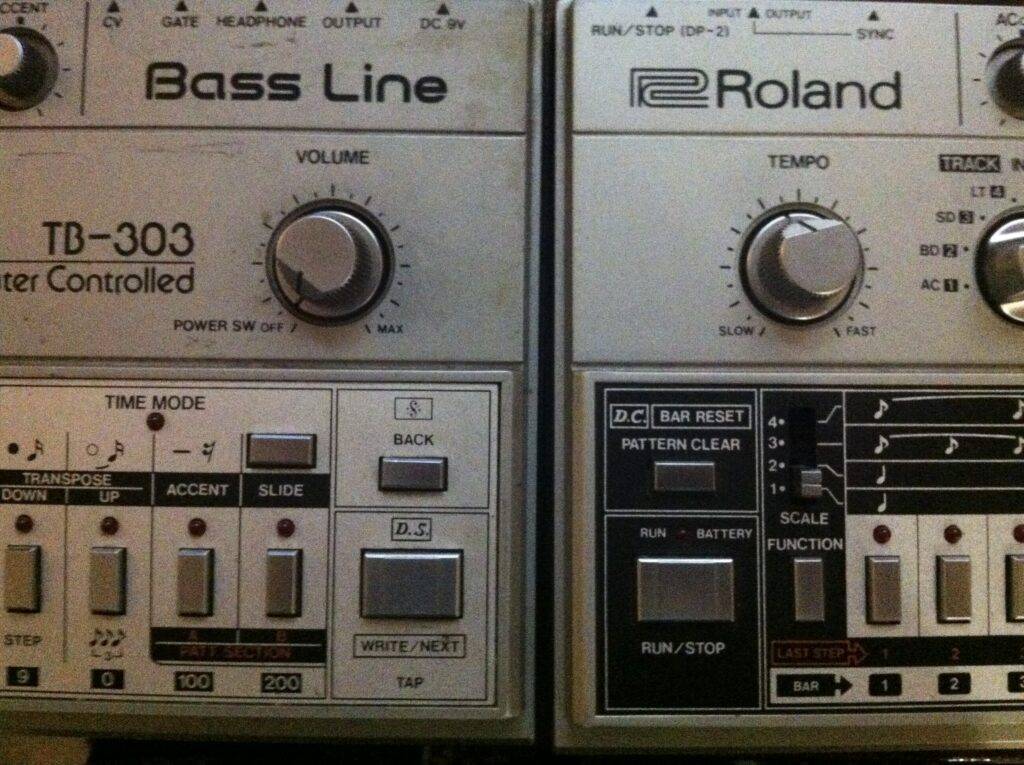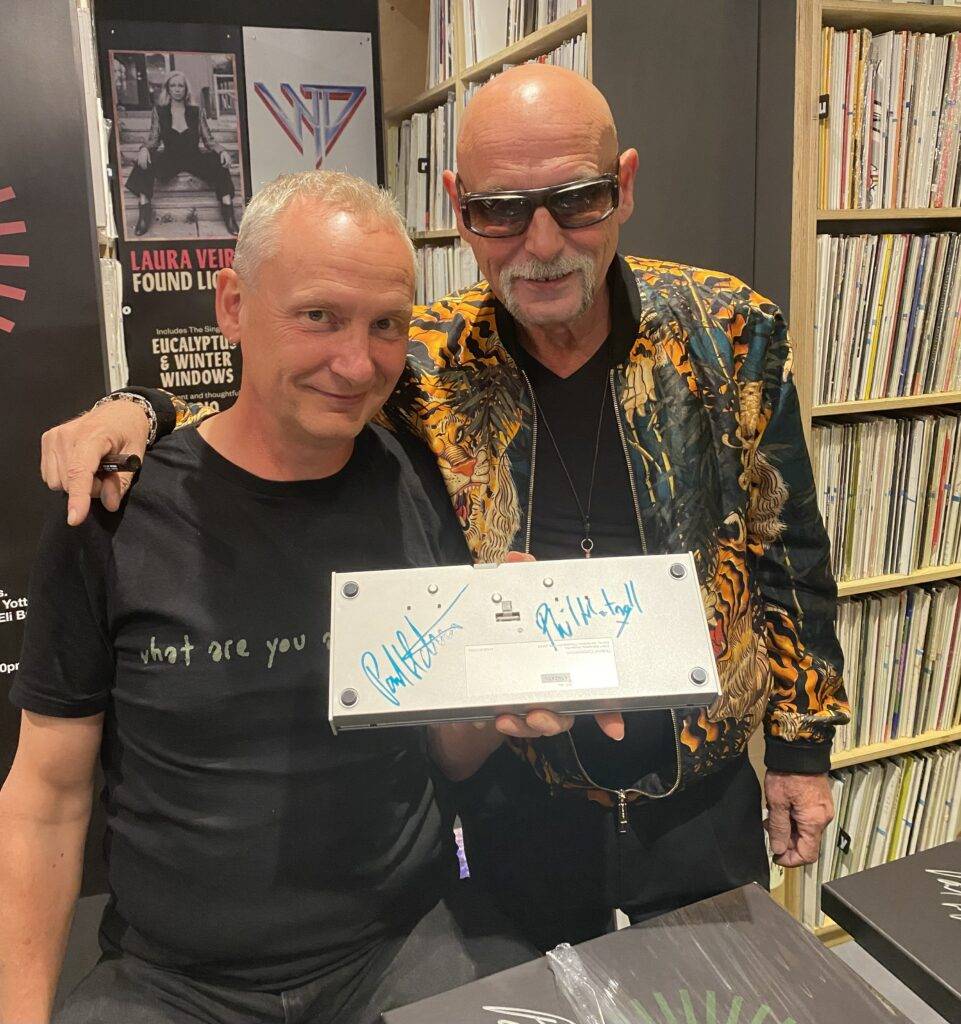
Update – The signed TB-303 has now sold!
We are incredibly chuffed to announce that we have a TB-03 synth module (a recreation of the classic Roland TB-303) to give to one lucky bidder. However, this is no ordinary TB-03. It’s been graciously signed by two people considered masters of the 303 – Paul and Phil Hartnoll of the electronic music duo Orbital. We will be auctioning this signed TB-03 on eBay and will donate 100% of the profits to a local Brighton charity. To celebrate this auction, we’ve delved into the history of the Roland TB-303 to discover why it’s one of the most important electronic instruments ever made.
Once you’ve submitted your bid, make sure you come back to learn how big an impact the Roland TB-303 made on electronic music. We’ll also take a look at Orbital’s own TB-303, which featured on a lot of their hits and toured across the world with them.
The Legend of the Silver Box
The Roland TB-303 is a true icon in the synth world. Even if you’ve never heard of it, there’s a good chance you’ve heard it in a song. There’s an even better chance that you’ve listened to a track influenced by the genre the 303 kickstarted. Though the TB-303 is arguably as important as vintage icons like the Sequential‘s Prophet-5, Moog‘s Minimoog and Roland’s own Jupiter-8, it wasn’t an immediate hit. It would take years after the Roland TB-303 came out for it to become one of the defining sounds of a generation. How did a compact silver box with a distinctive sonic character become so influential?
It Started In A Lab
The Roland TB-303 story begins in the 1980s. Over in Japan, the Roland Corporation was cooking up a new product in their lab. The goal was to create a partner for their TR-606 drum module. It fell to engineer Tadao Kikumoto to design it. Kikumoto is a Roland legend, having designed two all-time icons in the drum machine world – the TR-808 and TR-909.
The Transistor Bass 303, shortened to TB-303, was supposed to recreate the sound of an electric bass guitar. A far cry from what it’d become known for! As Forbes magazine rightly proclaimed, the 303 had a “squelchy tone more reminiscent of a psychedelic mouth harp than a stringed instrument”.
Alongside the 606, the 303 was intended to be a portable accompaniment and practice tool for solo performers. If you were a guitarist, you could rock up to a gig with a drummer and bass player in your backpack. The two modules could be easily synced to the same tempo using innovative (at the time) DIN Sync technology. You wouldn’t want your bandmates playing out of time!
Monosynth Magic
Basically, the Roland TB-303 is what’s known as a “monophonic analogue synthesizer”. We’ll break down what that means for the folk out there who aren’t versed in synth terminology.
What does “monophonic” mean?
Firstly, “monophonic” means the TB-303 can only play one note at a time. This makes sense for a bass-focused synth like the 303. On the other hand, a “polyphonic” synth like the Juno-106 is capable of playing chords. A lot of producers tend to have a monosynth complimented by a polysynth in their setup. Although some synth artists such as the Human League and Depeche Mode would create arrangements and harmonies by layering a monosynth multiple times.
What makes it an “analogue” synthesizer?
Secondly, the TB-303 is an “analogue” synth because it uses analogue components to produce its sound. Some purists would argue that the analogue circuitry is what gives the 303 its mojo. Only around 10,000 Roland TB-303 units were made so vintage ones are very sought-after and expensive on the second-hand market. Since developing their cutting-edge digital technology, Roland has been able to faithfully recreate the TB-303’s magic in a more available, affordable and reliable package with the TB-03 and the TB-3.
Fun Fact for Synth Nerds: The TB-303 features a single analogue oscillator that can switch between a Sawtooth or a Square. The 303’s Square wave is shaped from a Saw wave using a single-transistor circuit, which gives it a different sound compared to a traditional Square wave.
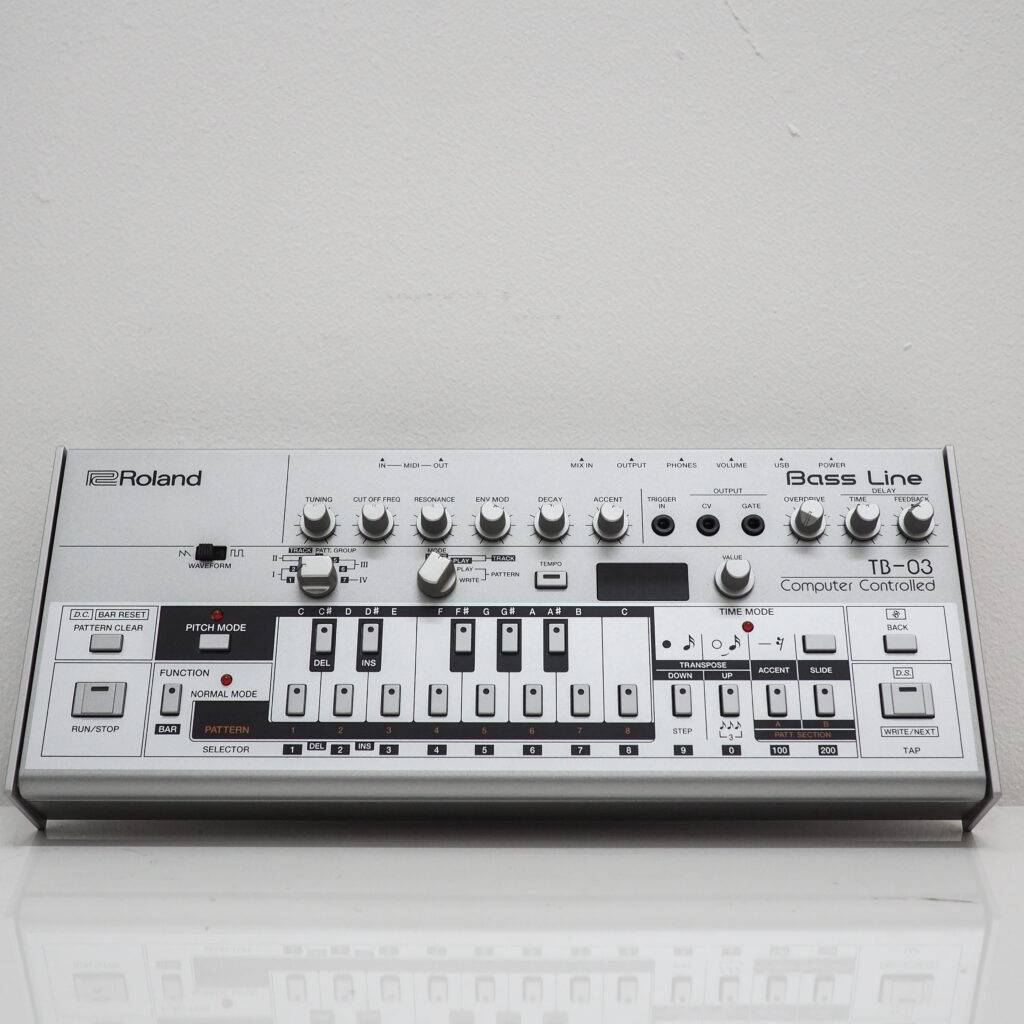
From Flop to Fame
Despite having a sound that eventually become beloved by electronic dance music producers everywhere, the Roland TB-303 was an instant flop. The 303 would be swiftly discontinued less than two years after its 1981 launch and was considered a commercial failure. There are tales of music stores with bargain bins filled with unwanted 303s at a ridiculously low price. If only time machines existed, eh?
It Didn’t Sound Like A Bass
Whilst the Roland TB-303’s distinct character is now woven into music history, its noticeably synthetic sound didn’t resemble a bass guitar at all. The analogue circuitry that gives it its character was nothing like today’s digital sampling that can sound a lot more like the real deal. When it comes to squelchy, chirpy basslines the TB-303 is king. Recreating the sound of a bass guitar? Not so much.
It Was Hard To Program
The Roland TB-303 is a tough synth to program, which would become part of its charm. Punching in notes is done via a mini “keyboard” on the panel. Instead of keys, the TB-303 uses button switches with a little red light for each one. This familiar piano-style layout is about the most intuitive aspect of programming a 303. Although the button-based keyboard is only one octave, a transpose button gives you up to four octaves of range. You can also add accents and slides between notes – a massive part of the 303 sound.
Because the TB-303 requires a tutorial to program (sometimes the included manual would be in Japanese), it’s difficult to program an exact sequence. However, this aspect makes it a pure Happy Accident Machine. The 303’s sequencer, whilst hard to use, meant that you didn’t need a music degree or even ability with an instrument to create an interesting melody. In a similar vein to the Punk movement, the electronic music scene around the TB-303 was a level playing field.
Despite All That…
On the whole, the TB-303’s definitive qualities that made it a flop were the reasons it eventually became iconic. Plus, with instant access to the Cutoff and Resonance controls even non-musicians could conjure exciting sounds by turning a knob.
Top Tip for Original 303 Owners – Run out of ideas and need some inspiration? If your sequences are getting stale, remove the batteries to exploit the Low Voltage Failure mode. This will erase and totally randomise the programmed patterns!
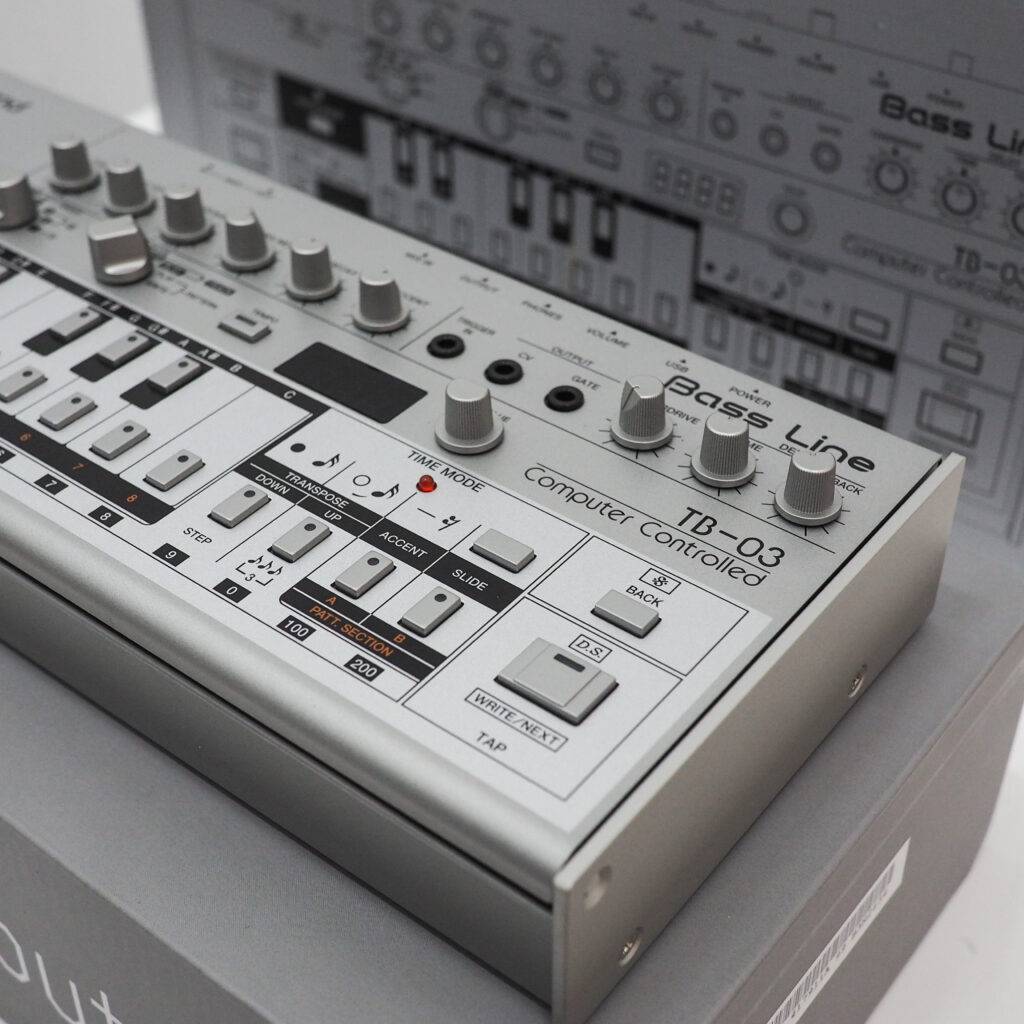
The Electric Guitar of EDM
Like the MPC is to Hip-Hop and the Fender Stratocaster is to Rock, the Roland TB-303 is a core part of electronic dance music. So how did the TB-303 become what some have called “the electric guitar of EDM”?
Pawn Shop Hero
Since the Roland TB-303 was a commercial failure, it became readily available for a low price. Big polysynths like the Prophet-5, the Jupiter-8 and the OB-XA were still incredibly expensive and out of reach for most. Similar to the TR-808, the TB-303 was affordable and accessible to young producers in the underground electronic music scene. There were a lot of them available for cheap (at the time). Now, DJs had the tools to compose and create their own music. Indeed, these producers would come to appreciate the TB-303 for its quirks and its character rather than its ability to emulate a bass guitar. It’s through these pioneering artists that a simple monosynth would become an iconic piece of electronic music culture.
Before the Acid
Before the Roland TB-303 became the sound of Acid House and rave culture, it featured on the disco-influenced “Rip It Up” by Orange Juice. “Rip It Up” was the first charting single to feature the 303, reaching the eighth position in the UK chart in 1983. Other notable artists that used the 303 before the Acid House explosion include Jessie Saunders (“On and On”), Italo Disco producer Alexander Robotnik (“Les Problemes d’Amour”) and Charanjit Singh. Singh’s album Synthesizing: Ten Ragas to a Disco Beat preceded Acid House by five years and fused electronic disco with Indian Classical music.
Phuture of Dance Music
Whilst there is some debate on the first Acid House record, there is no doubt that Phuture’s revolutionary “Acid Tracks” played a huge role in defining the genre. Back in the ’80s, three young DJs from Chicago – DJ Pierre, Spanky and Herb J – created a collective called Phuture. The trio aspired to become music producers and were searching for a unique sound. The answer was discovered in a second-hand store, where Spanky stumbled upon a Roland TB-303 that cost less than $100.
One fateful studio session in 1985 later… music history was created.
Initially, Phuture had to figure out how the TB-303 worked. The included manual was, helpfully, in Japanese. However, they eventually got a pattern going that stuck. Whilst the TB-303 sequence was going alongside a drum machine, Pierre started tweaking the knobs. The result was the classic squelchy Acid Bass sound that we all know and love. After a couple hours of experimental jamming, they ended up with a demo on tape. How many artists can say they defined an entire genre in an afternoon?
Acid Tracks
Phuture would take this tape down to the legendary Music Box club in Chicago. The resident DJ Ron Hardy proceeded to play it. The sound on Phuture’s tape was unlike anything the crowd had heard before. It took three plays for the bemused crowd to digest the new sound they were hearing. By the fourth play – the dancefloor was in full swing. This tape would continue to be played multiple times a night and become affectionately known as “Ron Hardy’s Acid Track”. Two years later in 1987, it would evolve to become the seminal Acid House song “Acid Tracks”. A year after its release, however, House music record sales were dwindling.
But that isn’t where the Acid House story ends. Over the continent, the genre that was started by a little silver synthesizer would become the soundtrack of a cultural movement.
Second Summer of Love
In a South London gym, a 300-capacity club opened in November 1987. This club would become Shoom, also known as Ground Zero for Acid House. It was one of the first clubs in the UK to introduce House music to club-goers. The club’s founders, Danny Rampling and his Jenny, created Shoom with a musical ethos of “anything goes” after a fateful trip to Ibiza. Alongside other clubs like West End London’s Trip and Manchester’s Thunderdome, Shoom would help spearhead the popularity of Acid House and the Second Summer of Love.
Raving Mad
Strict anti-club laws made it significantly tricky for the clubbing public to party to the extent that they wanted. In fact, after-hours clubbing was illegal during the late ’80s. Rather than preventing it, the ravers would attend secret gatherings in undisclosed locations – known as “raves”. As the Second Summer of Love rolled on, the Roland TB-303 would continue to be heard across countless illegal raves.
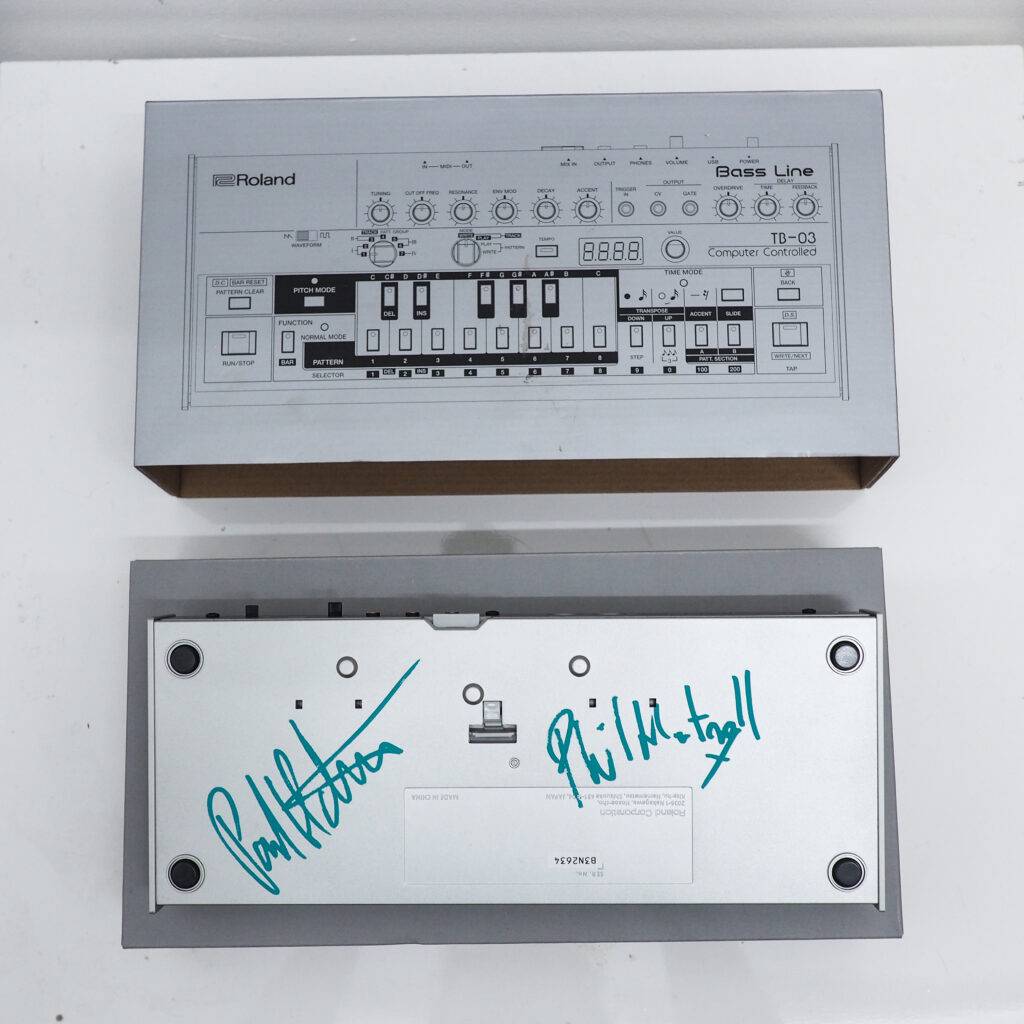
An Accidental Legend
For something that was a commercial flop upon its release, the impact that the Roland TB-303 had is nothing short of phenomenal. When Acid House was at its peak, the 303 eclipsed the electric guitar as the most important instrument in popular music. Few instruments in history are as integral to the creation of a genre as the 303. Its status as a mythical synth is well-earned.
Into The Stratosphere
Renowned UK electronic music duo Orbital are one of the most notable artists associated with the Roland TB-303. The quirky analogue monosynth was a key ingredient in their biggest and most influential tracks, including “Chime”, “Impact”, “Rewind” and “Fahrenheit 303” (of course). In the world of electronic music, Orbital are highly regarded as innovators thanks to their unique, boundary-pushing music, otherworldly live shows and impressive longevity.
Humble Origins
Orbital consists of brothers Paul and Phillip Hartnoll. They’re named after the London Orbital Motorway (aka the M25) which was crucial to the party network of the Acid House era. Their origin is a humble one, with their first “studio” located in sleepy Sevenoaks, Kent. The setup where they created their early music (up to and including “The Green Album”) was under the stairs of a knocked-through stair cupboard. A core part of their home studio was their Roland TR-909 drum machine and TB-303.
Working Men’s Synth
Before picking up their own unit, Paul noticed a number of TB-303s littered around second-hand shops on Tottenham Court Road. In an interview, he confessed that initially, he wasn’t a fan of what many were calling the “new sound”. Upon hearing Phuture’s “Slam” – he was sold.
Orbital’s TB-303 was sourced by Phil from a London-based working men’s club keyboardist. It only cost £100, which is especially cheap by today’s standards. As part of the sale, Phil was subjected to a demo of the unit. The original owner was using the TB-303 for its intended purpose, having programmed the entirety bass part of the Pet Shop Boys’ “West End Girls” on it. Once the TB-303 was in their possession, Orbital would have a very different purpose for it.
Pop Success
That TB-303 would go on to become a foundational part of Orbital’s first hit song “Chime”. Paul took “Chime” to his friend Jazzy M’s record store, leading Jazzy to play it for a crowd of DJs. This would create a tonne of hype for the song and lead to Jazzy starting his own label. The song would eventually be released in 1989. As an instrumental song, it wasn’t allowed to be played on BBC radio. Thankfully, Radio 1 DJ Gary Davies would give it some crucial exposure on the station by using it as the background music for his regular lunch hour show. “Chime” would go on to break the UK Top 40 and lead to the Hartnoll brothers performing on Top of the Pops. Paul and Phil’s lives would never be the same again.
Orbital Impact
Here are some words and insights from our very own Store Manager Dan Ward. Dan is fortunate enough to know Paul and Phil Hartnoll personally and was lucky enough to look after their Roland TB-303 back in the day.
Indeed, the significance and impact that Orbital have had on the global electronic music scene cannot be overstated. Orbital all but introduced electronic music to the festival scene with their iconic performances at Glastonbury in the early 90s. These live sets were instrumental in changing the festival scene as it was back then, from what was mostly a handful of hippie-centric illegal parties to the huge global genre-spanning events like Latitude to Burning Man.
Their original Roland TB-303, named the ORBITAL-3030001, is unquestionably one of the most significant electronic instruments in the world. This 303 has probably rocked more souls live than any other 303 in existence. From accompanying a keyboardist in working men’s clubs, this 303 would go on to criss-cross the festival and stadium circuit with Orbital globally for around thirty years. There’s no doubt that it’s one of the most important heritage electronic instruments in existence. I’d argue that it’s up there with Clapton’s “Blackie” and Hendrix’s Monterey Stratocaster in cultural significance.
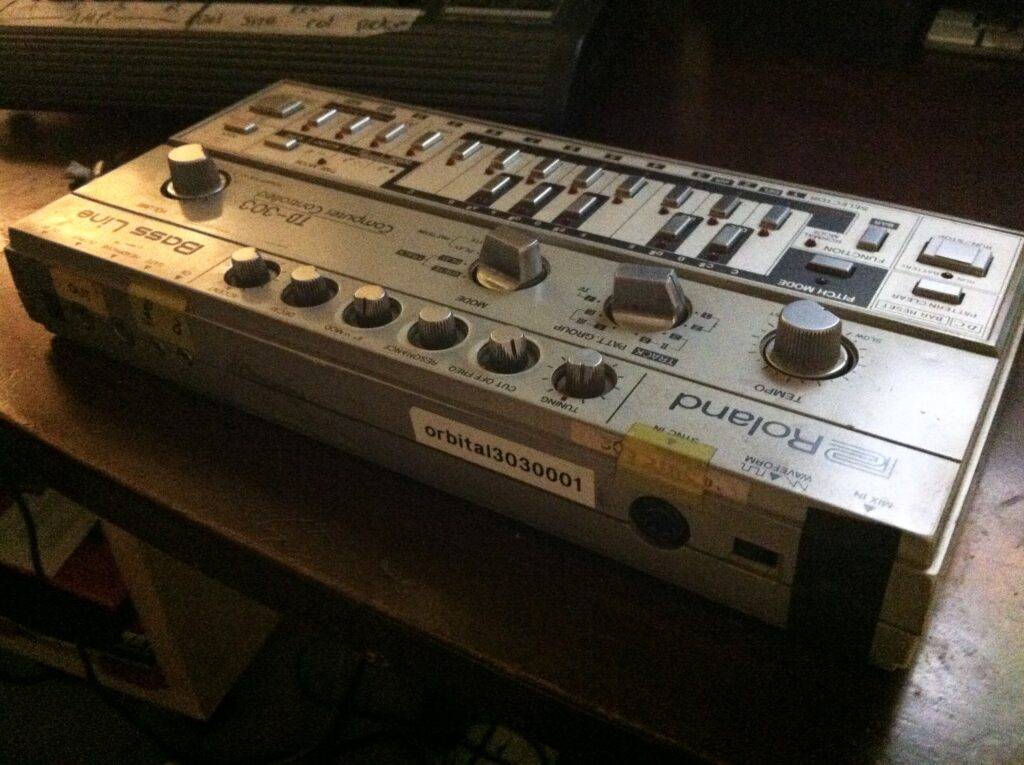
30 Something
To celebrate their thirty-year anniversary, Orbital have released 30 Something. This 24-track collection contains a mix of brand new tracks, remixes and re-recordings of their hits. It’s a superb retrospective and celebration of their astonishing career, looking back on the duo’s origins whilst acknowledging their profound influence on electronic dance music. Top producers the likes of Jon Hopkins, Lone, Shanti Celeste and Logic1000 contribute remixes of Orbital songs to 30 Something. Fans of Orbital’s live sets will adore the reworkings of classics such as “Satan”, “Impact”, “Chime”, “Halcyon” and “Belfast”.
